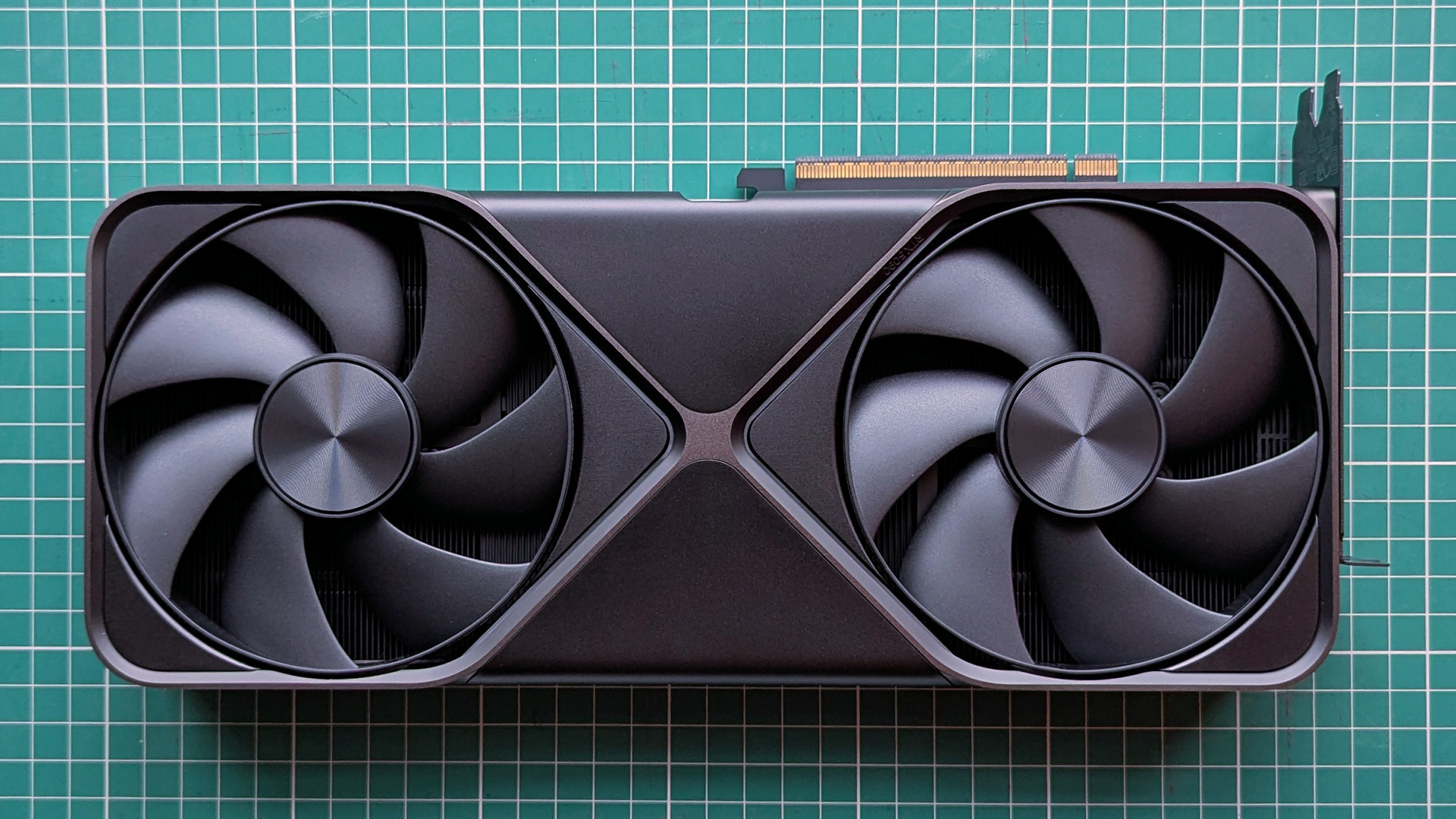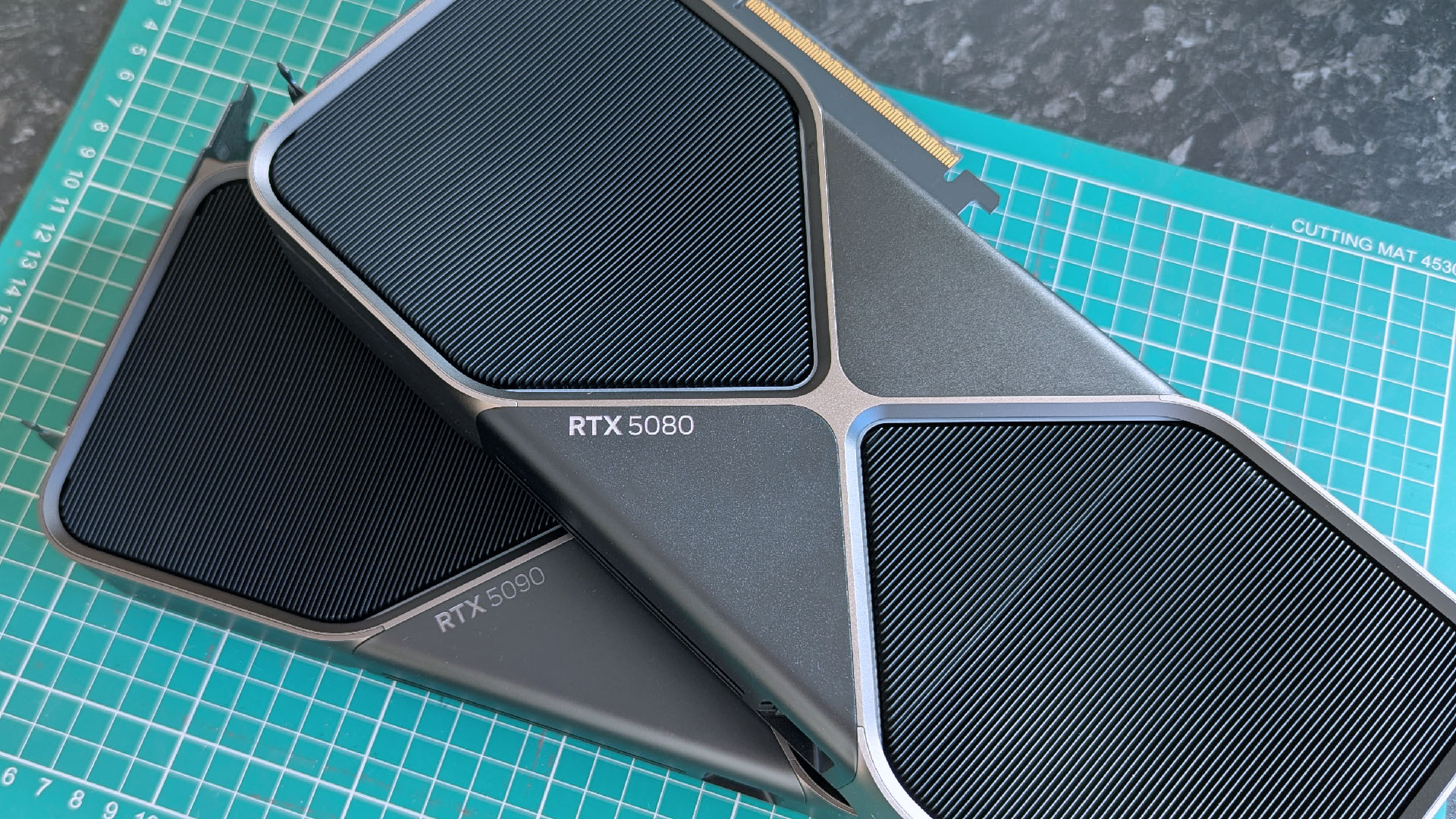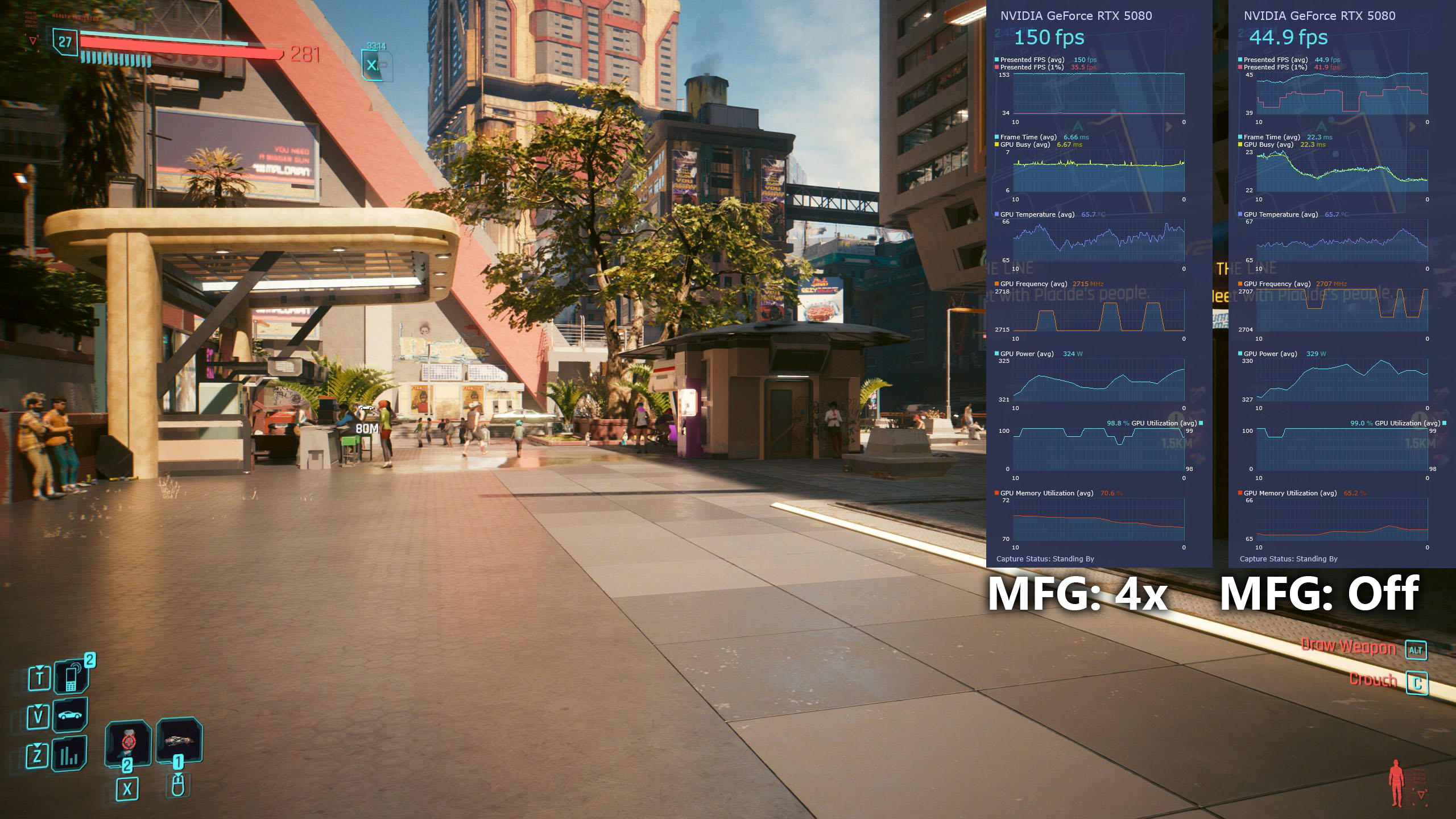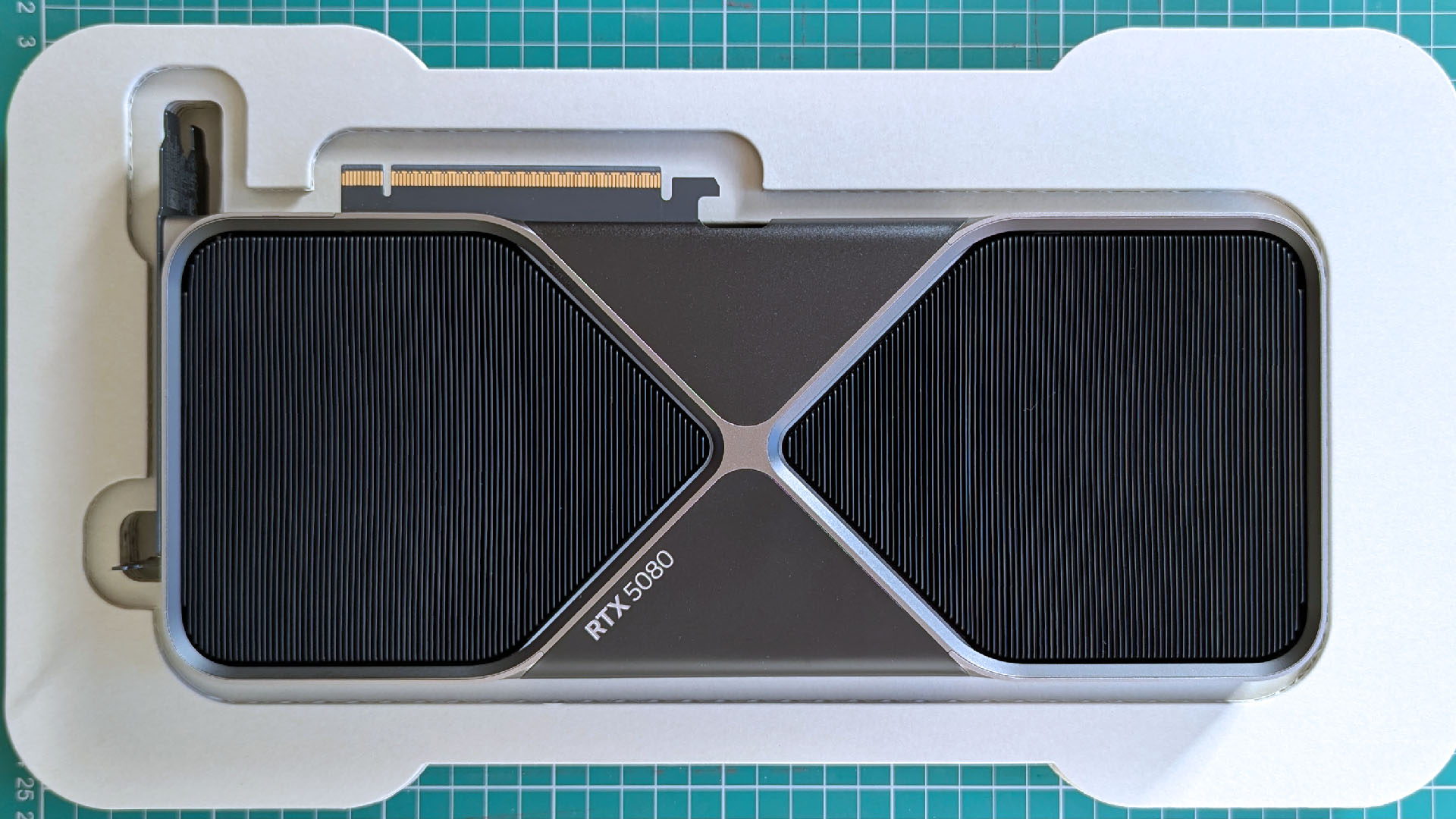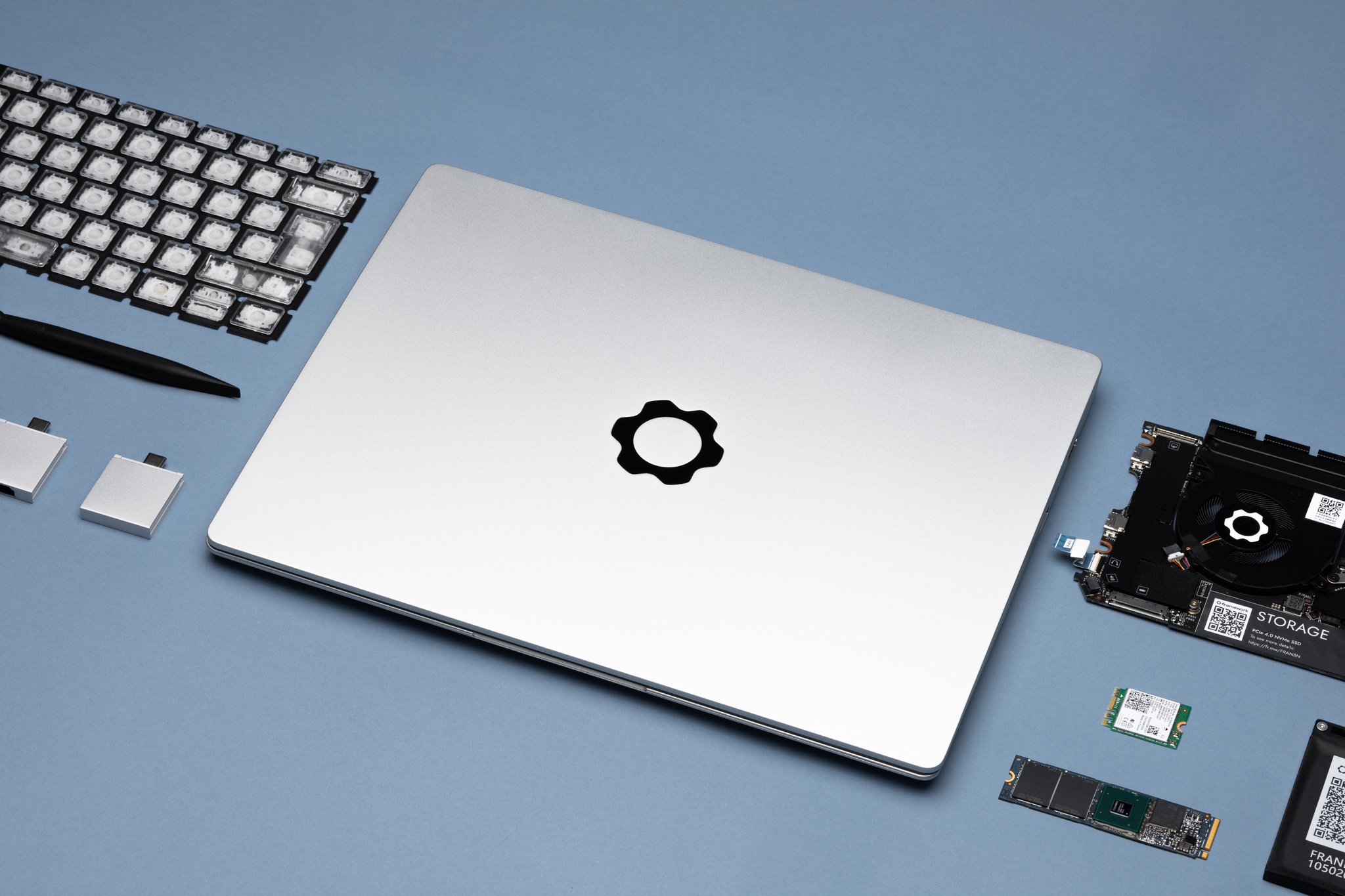I rounded up all of the big news about NVIDIA's RTX 50-series GPUs
NVIDIA's RTX 5000 "Blackwell" GPUs have landed, and I've pulled together the big news for a concise look at the next generation of hardware.
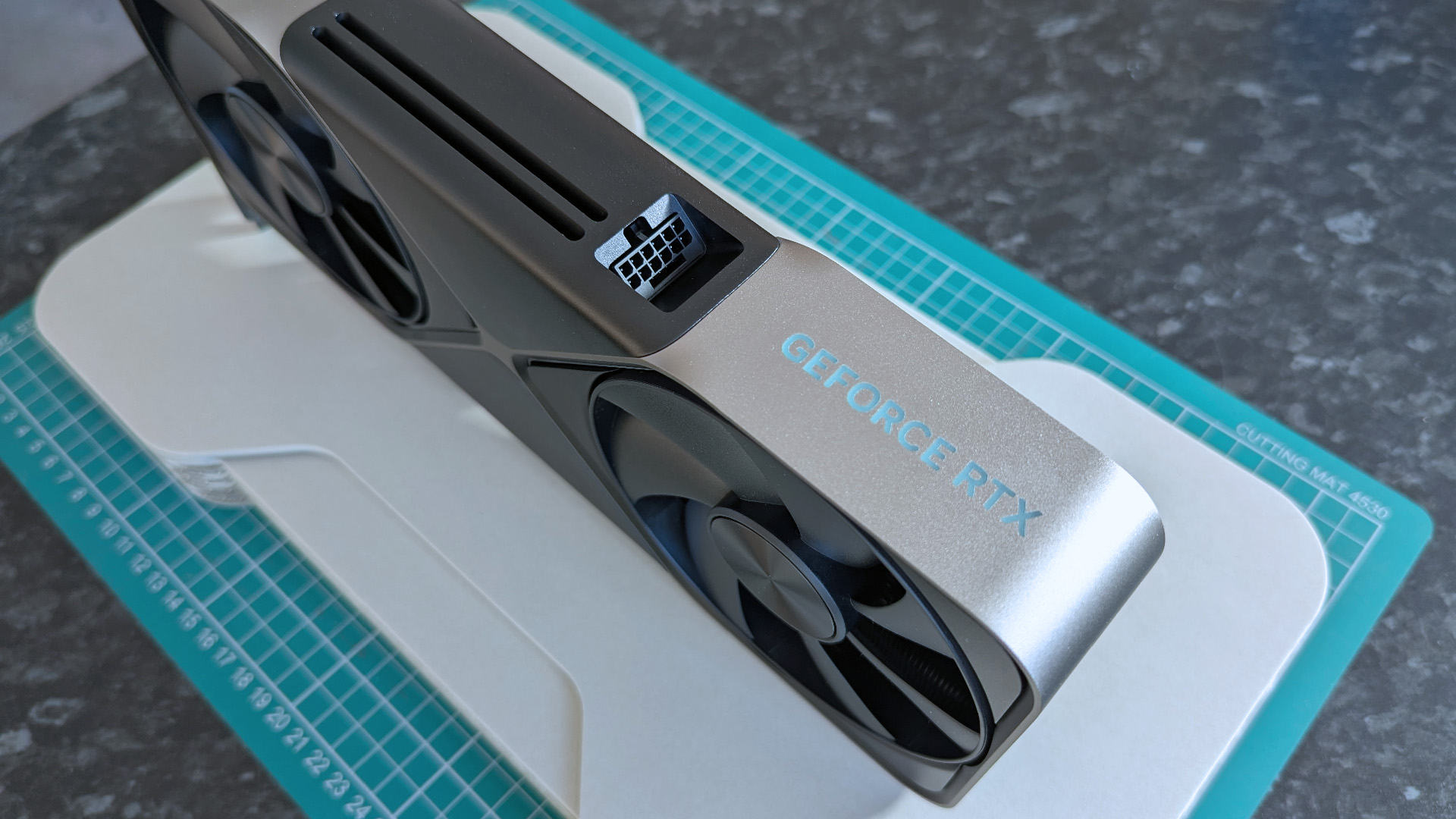
NVIDIA's RTX 50-series GPUs from the new "Blackwell" era have launched, and so far there are four options: RTX 5090, RTX 5080, RTX 5070 Ti, and RTX 5070.
These cards succeed the RTX 4000 "Ada" generation that's been around since 2022, with NVIDIA placing more focus than ever on AI for the RTX 5000 lineup.
NVIDIA's new cards were revealed at CES 2025 alongside some impressive claims — an RTX 5070 can outperform an RTX 4090?! — and some less impressive price tags.
Now that we've moved beyond the initial four cards with some reviews in tow, I have news to share about RTX PRO models and rumors regarding the RTX 5060.
March 19, 2025: I've updated this guide with new information about RTX PRO Blackwell GPUs, RTX Remix, RTX 5000 reviews, and more. — Cale Hunt
NVIDIA announces RTX PRO workstation GPUs
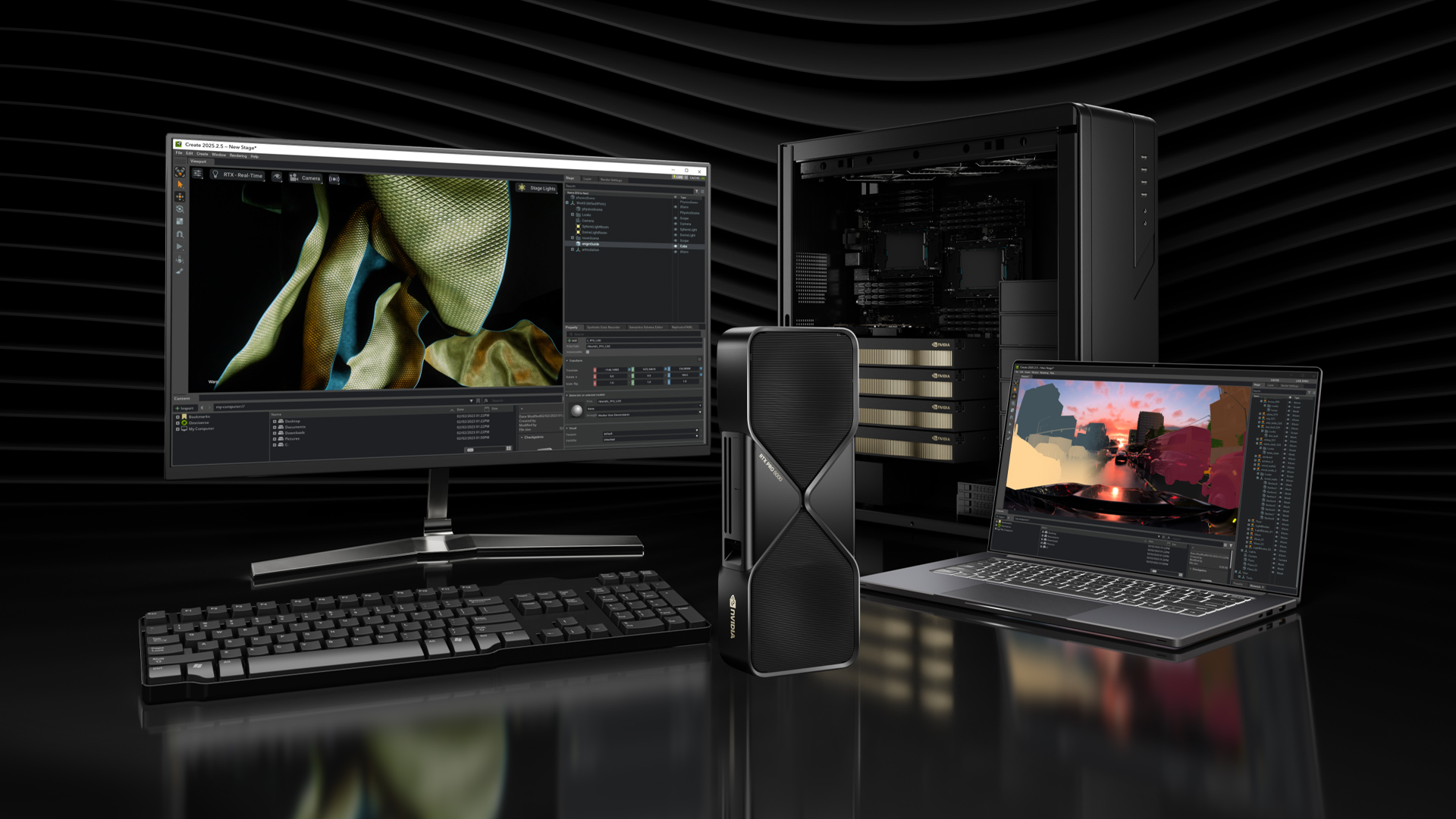
The latest GPU news from NVIDIA comes from its GTC 2025 AI conference, at which Team Green announced new RTX PRO "Blackwell" graphics cards designed for workstations and servers.
Focusing on the Blackwell desktop hardware, NVIDIA lists RTX PRO 6000, RTX PRO 5000, RTX PRO 4500, and RTX PRO 4000 GPUs.
Laptops aren't ignored, with NVIDIA RTX PRO 5000, RTX PRO 4000, RTX PRO 3000, RTX PRO 2000, RTX PRO 1000, and RTX Pro 500 Blackwell mobile GPUs.
All the latest news, reviews, and guides for Windows and Xbox diehards.
These new PRO Blackwell cards are designed for the future of generative, agentic, and physical AI realms, with significant upgrades to AI Tensor cores.
The desktop RTX PRO Blackwell GPUs are expected this summer, while the laptop versions are expected later this year.
NVIDIA officially announces its new RTX 5000 GPUs
NVIDIA CEO Jensen Huang officially kickstarted CES 2025 with a keynote speech on January 6, where he revealed the company's next generation of "Blackwell" RTX 5000 graphics cards.
Huang made a bold claim, stating that the RTX 5070 can achieve RTX 4090 performance, all for well less than half the price. However, he followed that statement by saying it's all impossible without AI, which isn't too surprising.
All-new DLSS 4 (now with Multi Frame Generation) and Reflex 2 with Frame Warp were revealed to be the main drivers behind the massive performance boost.
Together, they push the capabilities of these GPUs far beyond what the physical hardware can do.
NVIDIA RTX 5000 specifications
NVIDIA has announced the RTX 5090, RTX 5080, RTX 5070 Ti, and RTX 5070 GPUs for both desktop and laptop PCs.
The flagship RTX 5090 card unsurprisingly has the most impressive specs, arriving with 32GB of GDDR7 VRAM with 1.792TB/s memory bandwidth. That's nearly twice as much bandwidth as the RTX 4090, with more and faster GDDR76 VRAM.
Here's a look at the four cards so far announced by NVIDIA.
Spec | NVIDIA RTX 5090 | NVIDIA RTX 5080 | NVIDIA RTX 5070 Ti | NVIDIA RTX 5070 |
|---|---|---|---|---|
Architecture | Blackwell | Blackwell | Blackwell | Blackwell |
Memory | 32GB GDDR7 | 16GB GDDR7 | 16GB GDDR7 | 12GB GDDR7 |
Memory Bandwidth | 1.792TB/s | 960GB/s | 896GB/s | 672GB/s |
Memory Bus | 512-bit | 256-bit | 256-bit | 192-bit |
CUDA Cores | 21,760 | 10,752 | 8,960 | 6,144 |
RT TFLOPS | 318 | 171 | 133 | 94 |
AI TOPS | 3,352 | 1,801 | 1,406 | 988 |
NVIDIA Encoder (NVENC) | 3x 9th Gen | 2x 9th Gen | 2x 9th Gen | 1x 9th Gen |
NVIDIA Decoder (NVDEC) | 2x 6th Gen | 2x 6th Gen | 1x 6th Gen | 1x 6th Gen |
TGP | 575W | 360W | 300W | 250W |
Required PSU | 1,000W | 850W | 750W | 650W |
NVIDIA RTX 50-series reviewed by Windows Central
Windows Central Senior Editor reviewed the RTX 5090, a GPU that's best reserved for professional workflows due to its enormous power and price.
Testing the new Multi Frame Generation (MFG) feature in Cyberpunk 2077, Wilson discovered a boost from 68 FPS to 228 FPS with 'Ray Tracing Overdrive' enabled in the game.
Wilson also reviewed the RTX 5080 favorably and again tested DLSS 4's MFG in Cyberpunk 2077. This time, frame rates jumped from about 45 FPS up to 150 FPS.
Multi Frame Generation was cause for worry for many gamers, as it was unclear how the tech would deal with latency and quality when AI is creating up to three frames from one raw frame.
Now that I've seen what MFG can really do — boost frame rates substantially without much harm to the game's overall feel — I don't think there's much cause for worry.
👉 Related: NVIDIA RTX 5070 Ti vs. RTX 5070
In his RTX 5080 review, Wilson remarked:
"If you want to crank all of the visuals in your favorite titles to their upper limits, you'll need a powerful GPU like the RTX 5080. While not the top-end card, this will still provide a smooth experience at 4K if you utilize DLSS 4 and MFG x4."
The RTX 5070 and RTX 5070 Ti launched after the 5080/5090, and although we didn't personally review them, I put together some review roundups.
Reviewers were particularly harsh on the RTX 5070, with many calling out NVIDIA's claims of "RTX 4090" performance. That, combined with high prices and limited stock, didn't sit well.
How much do NVIDIA RTX 5000 GPUs cost?
NVIDIA's pricing is a big part of the negativity surrounding these GPUs. Here's the MSRP as set by NVIDIA.
The RTX 5090 is unsurprisingly the most expensive at a $1,999 MSRP. The RTX 5080 drops to half that at $999, with the RTX 5070 Ti following up at $749.
The RTX 5070, which NVIDIA claims can match the performance of an RTX 4090 in part thanks to all the new AI advancements, comes in at $549.
- NVIDIA GeForce RTX 5090: $1,999 MSRP
- NVIDIA GeForce RTX 5080: $999 MSRP
- NVIDIA GeForce RTX 5070 Ti: $749 MSRP
- NVIDIA GeForce RTX 5070: $549 MSRP
Anyone who's been paying attention to major GPU retailers understands that these prices are not realistic.
NVIDIA's MSRP has largely been ignored by AIB manufacturers, causing prices to jump by hundreds of dollars in many cases.
👉 Related: Where to buy NVIDIA RTX 5090 and RTX 5080
Worse, extremely limited stock has created a playground for scalpers, who vacuum up any stock only to immediately repost it elsewhere at a higher price.
I still don't know at what price points the RTX 5060 models will start, but you realistically expect to pay as much as the 5070's MSRP for a lesser card. At least until the market calms.
👉 Related: Where to buy NVIDIA RTX 5070 Ti
When do NVIDIA RTX 5000 GPUs launch?
The RTX 5090 and RTX 5080 launched first on January 30, 2025. That included NVIDIA's Founders Edition reference cards and custom cards from partners like ASUS, Colorful, Gainward, GALAX, Gigabyte, INNO3D, KFA2, MSI, Palit, PNY, and ZOTAC.
The RTX 5070 Ti launched next on February 20, 2025. It did not have a Founders Edition version, instead relying on third-party cards.
The delayed RTX 5070 eventually launched on March 5, 2025, a day ahead of AMD's Radeon RX 9000 launch.
Laptop versions of these GPUs with Max-Q tunings are headed our way in the near future.
Where's the RTX 5060?
So far there's nothing more than leaks and rumors regarding the RTX 5060 lineup, which is expected to include the standard card and a Ti version.
Current leaks put the RTX 5060 at 8GB or 12GB of VRAM, with the RTX 5060 Ti climbing to 16GB.
I'm waiting for official confirmation from NVIDIA, as there seems to be some discrepancy between leakers regarding VRAM and final specs.
NVIDIA RTX 5000 launch issues
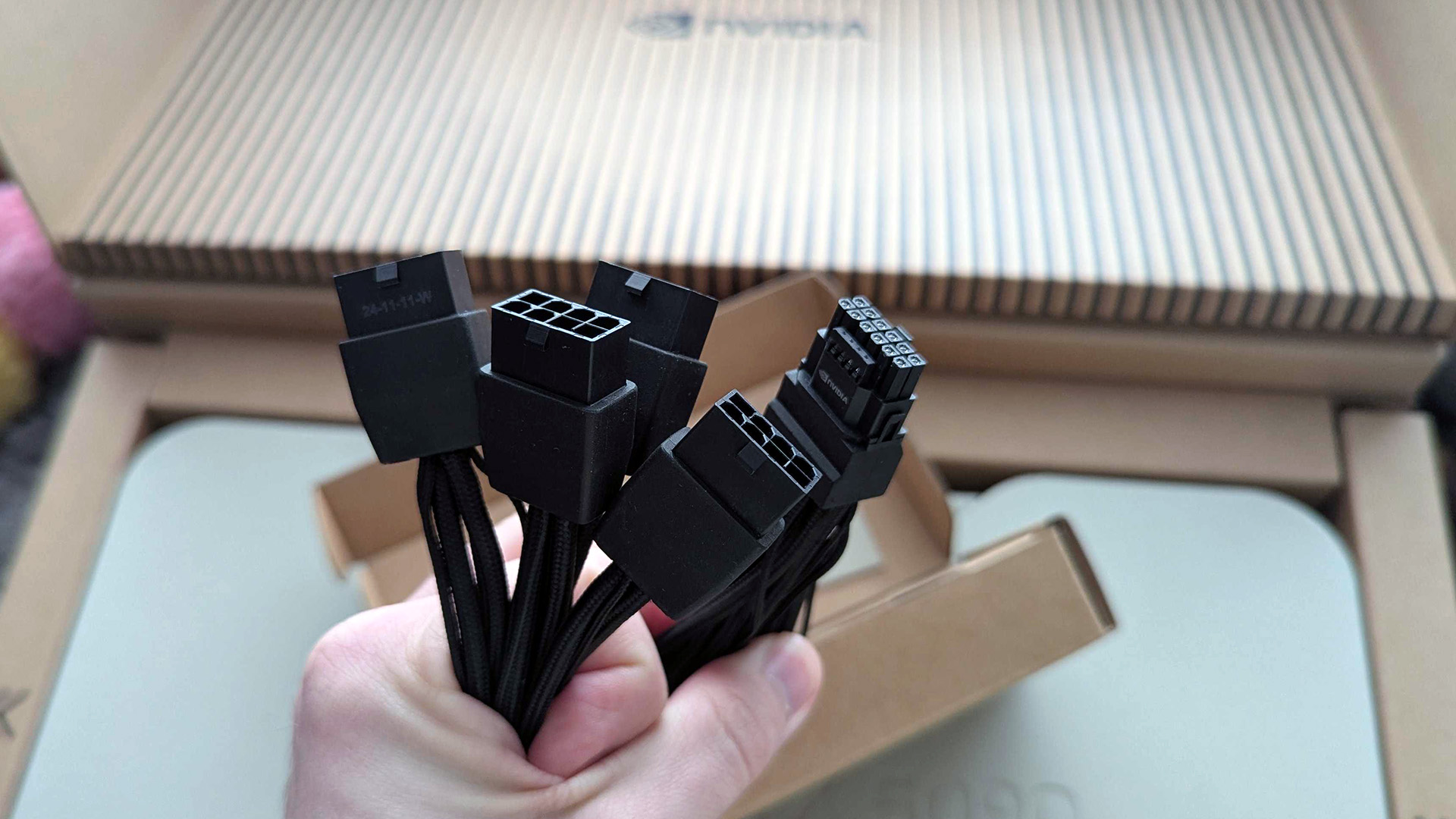
Aside from severe stock shortages, price gouging, and absent MSRPs, NVIDIA's RTX 5000 GPUs have seen some issues since their launch.
In February I wrote about adopters experiencing black screens, BSODs, and crashes, which were blamed on a faulty NVIDIA driver that's since been remedied.
Then came reports of RTX 5090 GPUs melting power cables, a situation seen before with the RTX 4090.
There's still no definitive fix for this problem, as it's said to be caused by NVIDIA's power setup that does not monitor power loads for each pin.
If you have an RTX 5090, you'll no doubt want to keep a close eye on it even if you have the best 12VHPWR cable.
Those who purchase any of NVIDIA's GPUs should also watch out for missing ROPs.
Users have proven that some cards are shipping with fewer Render Output Units than usual, which is grounds for immediate refund or replacement. Don't hold on to a GPU with less performance!
What is NVIDIA's DLSS 4?
NVIDIA's Deep Learning Super Sampling (DLSS) technology has been around since the launch of the first RTX GPUs in 2018, and as the name suggests, it's been learning and improving the whole time. DLSS 4 is available to any users of RTX 20-series through 50-series cards, but the available features differ due to hardware performance.
For example, the latest RTX 5000 GPUs are the only ones to get the new DLSS 4 Multi Frame Generation. Enhanced DLSS Frame Generation will also be available for RTX 50- and 40-series GPUs only. Older cards get access to enhanced DLSS Ray Reconstruction, DLSS Super Resolution, and Deep Learning Anti-Aliasing (DLAA).
So what exactly is the new DLSS 4 Multi Frame Generation? It's an improvement on the DLSS Frame Generation tech first accompanying DLSS 3, relying on the Blackwell GPU's specialized architecture to boost neural rendering abilities. Thanks to a new AI model, Multi Frame Generation takes the single generated frame and multiplies it.
NVIDIA says this results in "consistent and optimal frame pacing" despite the extra frames being generated. This new tech relies heavily on the fifth-gen Tensor cores found in the Blackwell GPUs, which is why the feature isn't coming to RTX 4000 cards. The tool also lowers VRAM usage, which should be a good thing considering NVIDIA didn't wow anyone with VRAM amounts.
NVIDIA used Cyberpunk 2077 running with full ray tracing to highlight the improvements. The game sits around 25-30 FPS with DLSS disabled. With DLSS 4 enabled, the frame rate climbs to 235 and beyond, even with ray tracing enabled.
More than 75 games and apps that are already compatible with NVIDIA's frame generation will be compatible with DLSS 4's Multi Frame Generation on launch day, with "many more on the way."
What is NVIDIA Reflex 2 with Frame Warp?
NVIDIA's Reflex technology was introduced in 2020 as a tool to reduce latency. In general, it works by syncing the CPU and GPU, resulting in your input actions being recognized faster. That's especially important in competitive games, but it can benefit any gamers. NVIDIA says that more than 90% of gamers use Reflex (when available).
New for 2025 is NVIDIA Reflex 2. It takes a different approach to lowering latency, which NVIDIA calls Frame Warp. Here's an explanation of how it works from NVIDIA itself:
"Reflex 2 Frame Warp takes this concept from research to reality. As a frame is being rendered by the GPU, the CPU calculates the camera position of the next frame in the pipeline, based on the latest mouse or controller input. Frame Warp samples the new camera position from the CPU, and warps the frame just rendered by the GPU to this newer camera position. The warp is conducted as late as possible, just before the rendered frame is sent to the display, ensuring the most recent mouse input is reflected on screen."
Shifting and warping a frame thus results in missing pixels, which are filled in with a "latency-optimized predictive rendering algorithm." A lot of the technical stuff starts to go over my head, but the bottom line? You should expect an easier time aiming and tracking enemies in competitive play.
What is RTX Remix?
Announced ahead of GDC 2025, NVIDIA's RTX Remix is exiting its beta stage for a full release.
RTX Remix is a free set of modding tools that enables users to remaster their favorite old games with new lighting, models, textures, effects, and more.
While Remix works with any RTX card, the full release adds tools (like Multi Frame Generation) that make it worth picking up an RTX 5000 GPU, especially if you want to take a stab at modding.
NVIDIA also announced new tools in the full Remix release that can reskin models to the same fidelity that's available in full scenes.
If you have an RTX card — especially an RTX 5000 card — you can see what Remix is all about with the free Half-Life 2 RTX demo available on Steam.

Cale Hunt brings to Windows Central more than nine years of experience writing about laptops, PCs, accessories, games, and beyond. If it runs Windows or in some way complements the hardware, there’s a good chance he knows about it, has written about it, or is already busy testing it.
You must confirm your public display name before commenting
Please logout and then login again, you will then be prompted to enter your display name.

